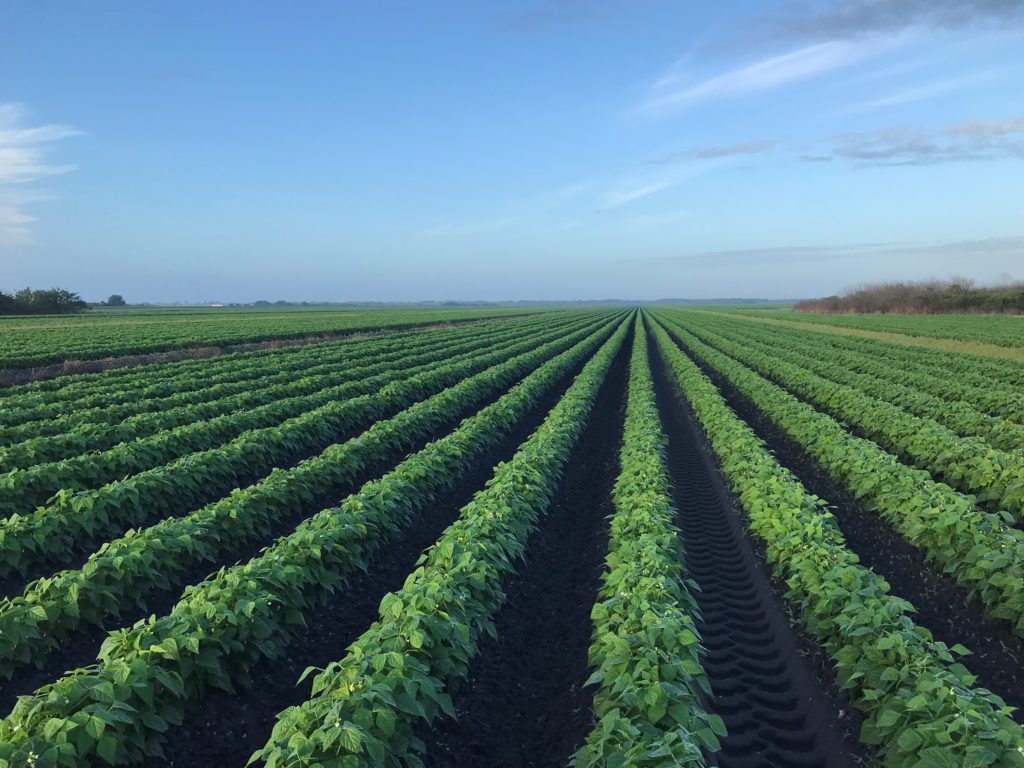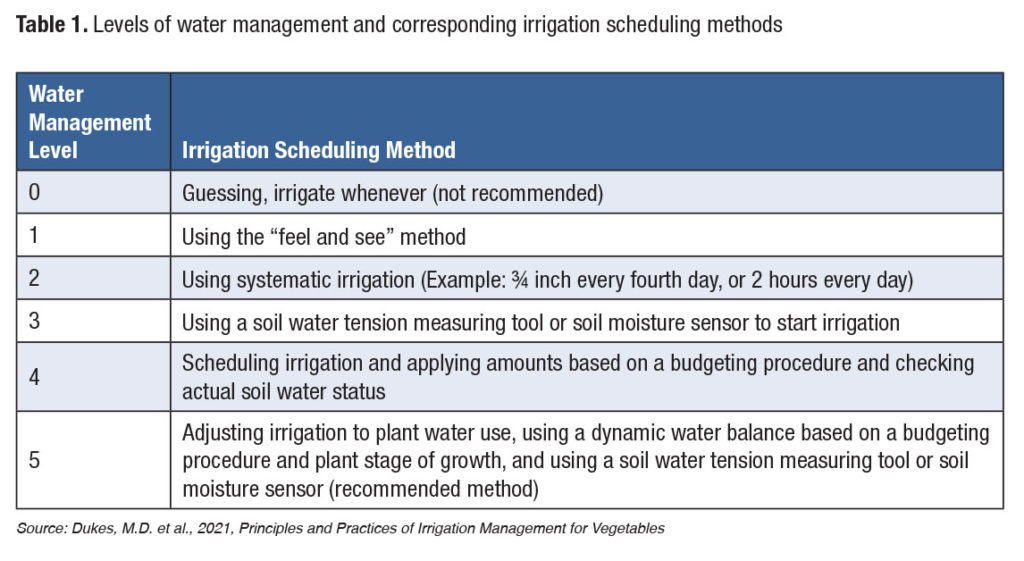
By Craig Frey
Sustainability of agricultural operations involves good stewardship of resources. Since at least the 1980s, sustainable nutrient management has been closely associated with the 4Rs — right source, right rate, right placement and right timing of nutrient applications. Over the last several decades, the grower, industry and research communities have continued to identify ways to reduce inputs while maintaining production goals to keep farms profitable.
The 4Rs have sometimes been rewritten as the 5Rs to include right irrigation. Some argue that the 4Rs are useless if irrigation management is not dialed in. Irrigation controls the movement of many nutrients within the soil profile. If not kept within the root zone of the crop, the downward movement of drip and overhead systems (or too high of a water table in seepage systems) eliminates the effectiveness of the 4Rs.
Keeping nutrients within the root zone is not the only key to healthy crops and yields. Nutrients must be available for plant uptake to occur. While there are many chemical and biological factors which govern the plant availability of nutrients, soil pH is one of the most important soil chemical properties. It affects nutrient adsorption and desorption from soil particle surfaces, and therefore what is available in the soil solution for plant uptake of many nutrients. Soil pH also governs microbial activity, which is essential for the availability of other nutrients, such as nitrogen.
There is a trinitarian-type relationship between pH, irrigation and nutrient management. Plant health cannot be maximized without the proper management of all three.
pH MANAGEMENT
Lime is the economical solution for low pH soils. Lime applications result in carbonate anions neutralizing hydrogen cations (H+) in the soil solution. Simultaneously, calcium cations replace H+ on the soil surface, releasing H+ to the soil solution to be leached by water movement. The leaching of H+ is the removal of acidity from the soil profile.

Liming not only reduces soil acidity but also affects many other soil parameters in low pH soils that collectively improve plant health. This includes reducing aluminum toxicity, increasing calcium in the soil profile (and magnesium if dolomitic limestone is used), increasing availability of other nutrients such as phosphorous, and increasing the cation exchange capacity, which in turn reduces the leaching of cations, particularly potassium.
With high pH soils, there is not a silver bullet solution. Ammoniacal fertilizers result in residual acidity due to the number of H+ that are released from chemical and biological reactions. However, the amount of residual acidity is low and ineffective in reducing high pH and is therefore only one tool for an integrated approach.
Elemental sulfur applications can reduce soil pH through biological processes. This process is slow and therefore is also a tool for an integrated approach. In some locations in Florida, high pH soils are the result of long-term irrigation with high pH water sources. Continued irrigation for crop production counteracts integrated strategies that are implemented to reduce soil pH, and irrigation acidification may be required.
New research in pH management has identified micronized sulfur as a potential immediate solution. Preliminary results indicate that low application rates can begin reducing pH in two weeks and maintain a reduced pH throughout a crop cycle (Figure 1). Research is ongoing at the University of Florida and in growers’ fields to continue to assess the effectiveness of this product.
IRRIGATION MANAGEMENT
With soil pH managed within the appropriate range for the crops produced, irrigation is the limiting factor in keeping nutrients available for crop growth. Irrigation efficiency is often first considered when talking about water management, with drip irrigation being the most efficient in terms of water use compared with overhead and seepage irrigation. While irrigation efficiency is extremely important for good stewardship, it is not economically viable for all cropping systems and is only one component of water management.
Irrigation management, on the other hand, is indicative of the intensity of management of the irrigation system. The University of Florida categorizes six levels of irrigation management, as seen in Table 1.
In addition to these irrigation management levels, there are five irrigation scheduling components that must be factored into decision making. These include:
- Target application rate, based on historical weather data/crop evapotranspiration
- Contribution of rainfall
- Soil moisture holding capacity of the root zone, which dictates the need to split irrigation events
- Soil moisture measurements to fine-tune application rates
- Daily recordkeeping of irrigation applied and total rainfall received
These items are critical for pinpointing the amount of water to be applied to optimize nutrient management and crop growth. Utilizing irrigation management level 5, in which evapotranspiration (ET) is used as the basis for determining irrigation need, crop need is calculated based on solar radiation, temperature, windspeed and the crop coefficient value KC (which is correlated with a reference crop).
ETC = KC x ETO
In Figure 2A, the daily reference evapotranspiration is super-inscribed with the crop coefficient of tomato for a Sept. 4 transplanting date in Immokalee, Florida. Multiplying these values together, we get the daily crop water need, which is shown as a 7-day moving average in blue in Figure 2B.
It is critical to note that crop irrigation needs in this example plateau on Oct. 2, just four weeks after transplanting. Additionally, a near linear decline begins just two weeks later. This is somewhat counterintuitive since the crop is putting on fruit at this time.
Irrigation measurements can be fine-tuned by soil moisture measurements by confirming if irrigation applications have infiltrated deeper than the root zone. Additionally, when the crop daily need increases above the soil moisture holding capacity within the root zone, applications must then be split into multiple applications.
NUTRIENT MANAGEMENT
Efficient and sustainable nutrient management is only possible when pH and irrigation management are optimal. Nutrient applications should always be based on calibrated soil tests for the crop grown. Plant uptake of those nutrients is extremely complex with the interaction of soil chemical and biological processes and environmental factors.
Amidst these complexities, detailed pH, irrigation and nutrient management enable growers to be good stewards of resources, maximizing crop production and economic returns while achieving the sustainability goals for future generations to follow.
Craig Frey is the Hendry County Extension director and Southwest Florida commercial vegetable Extension agent for the University of Florida Institute of Food and Agricultural Sciences.









